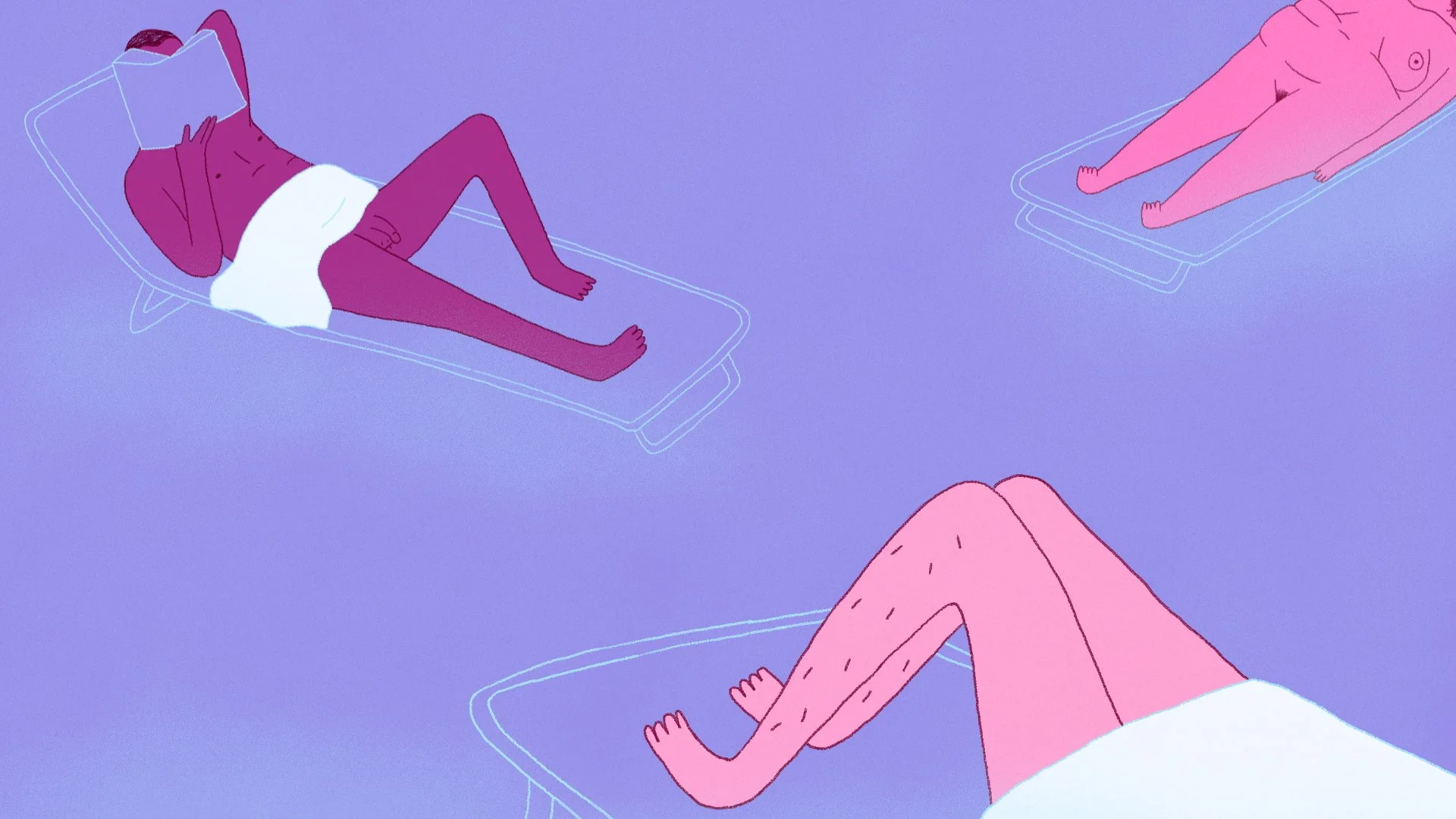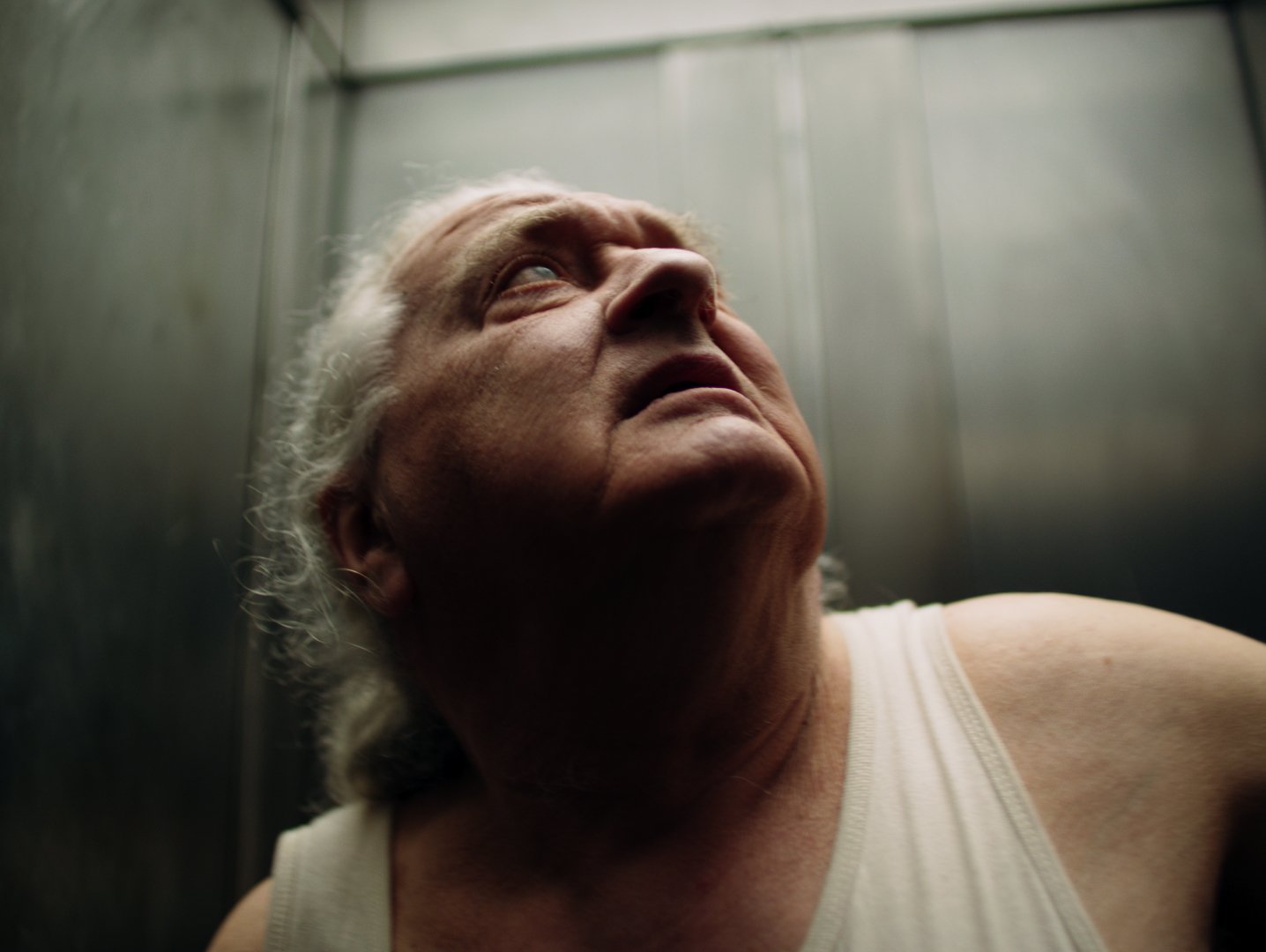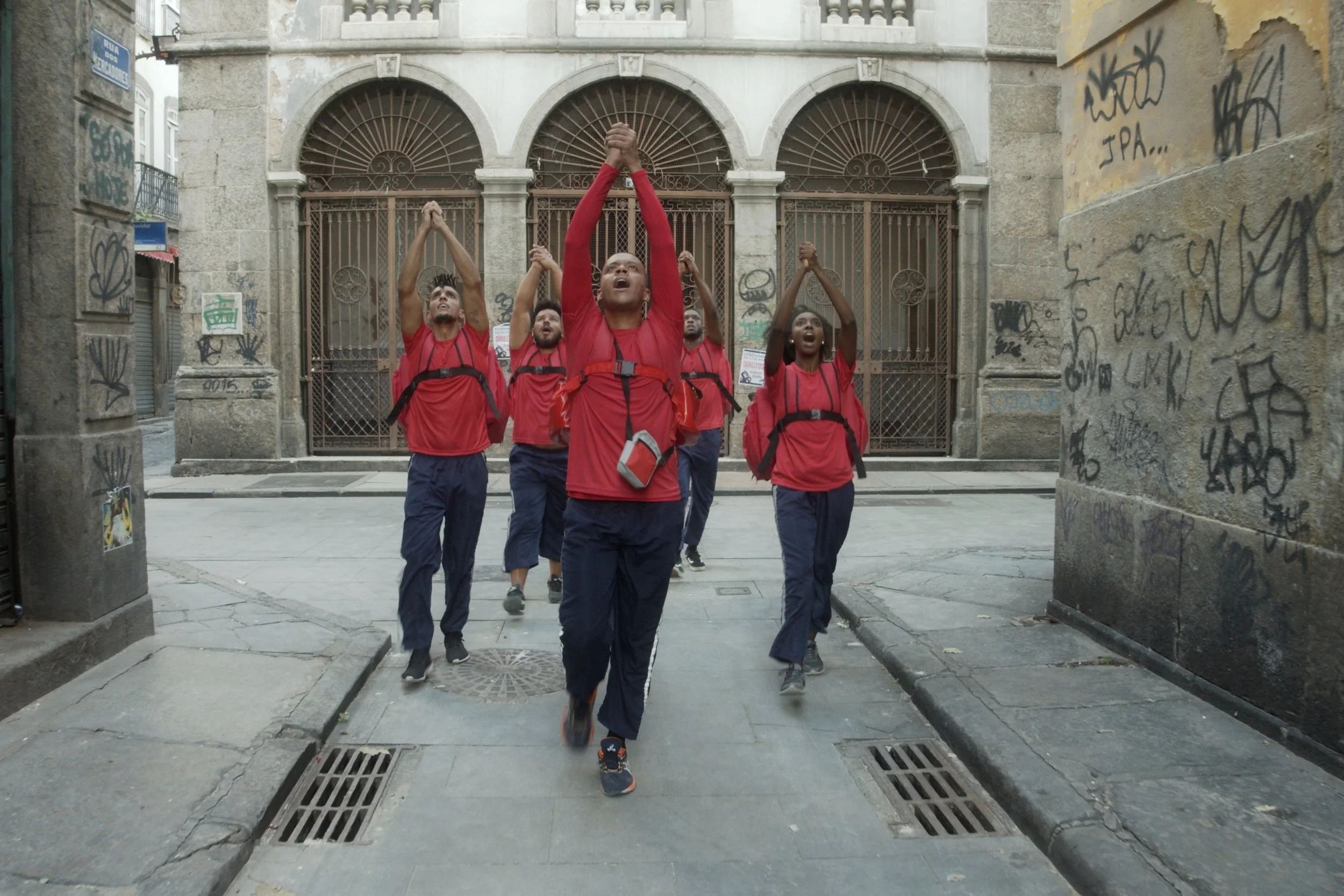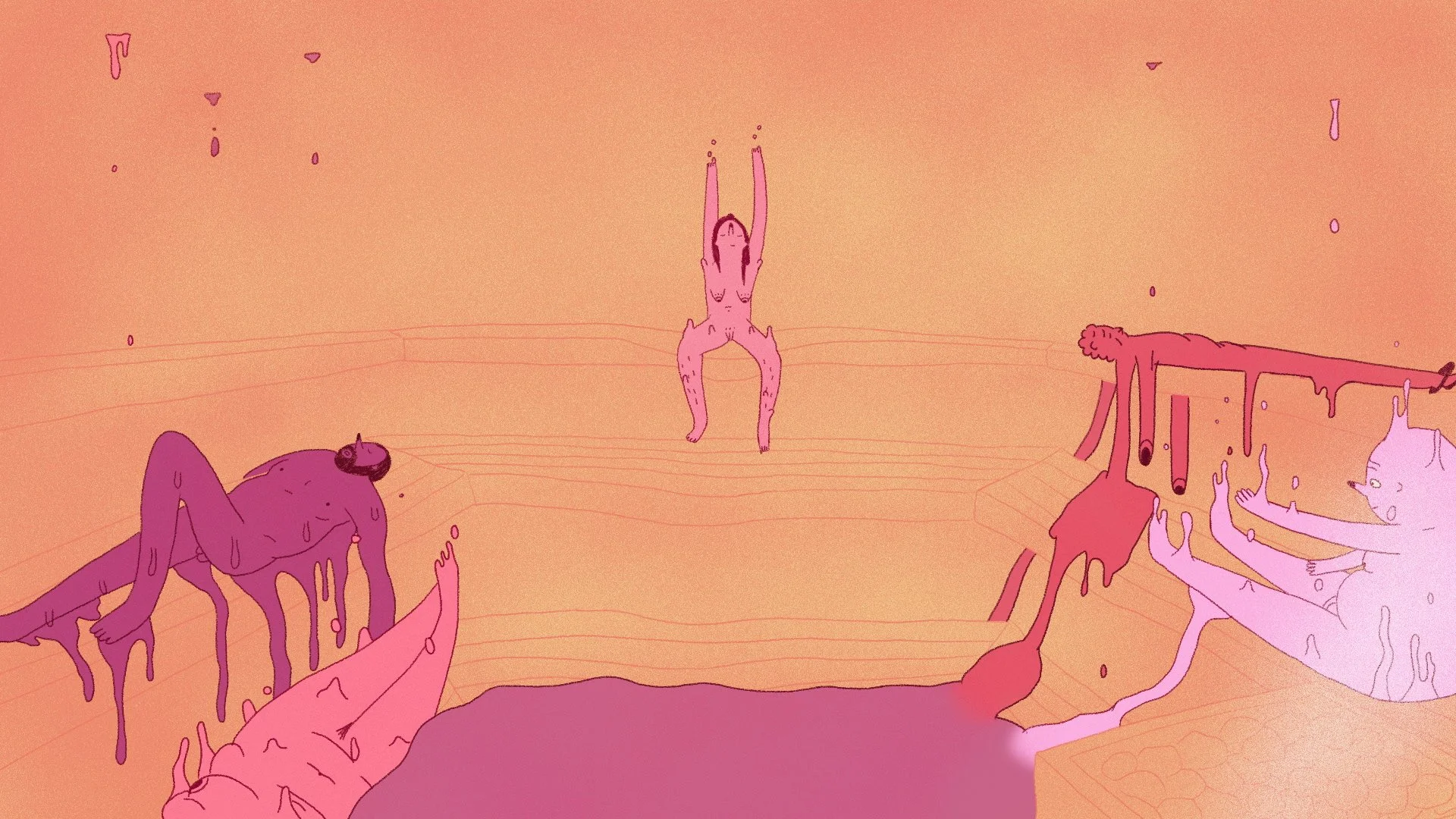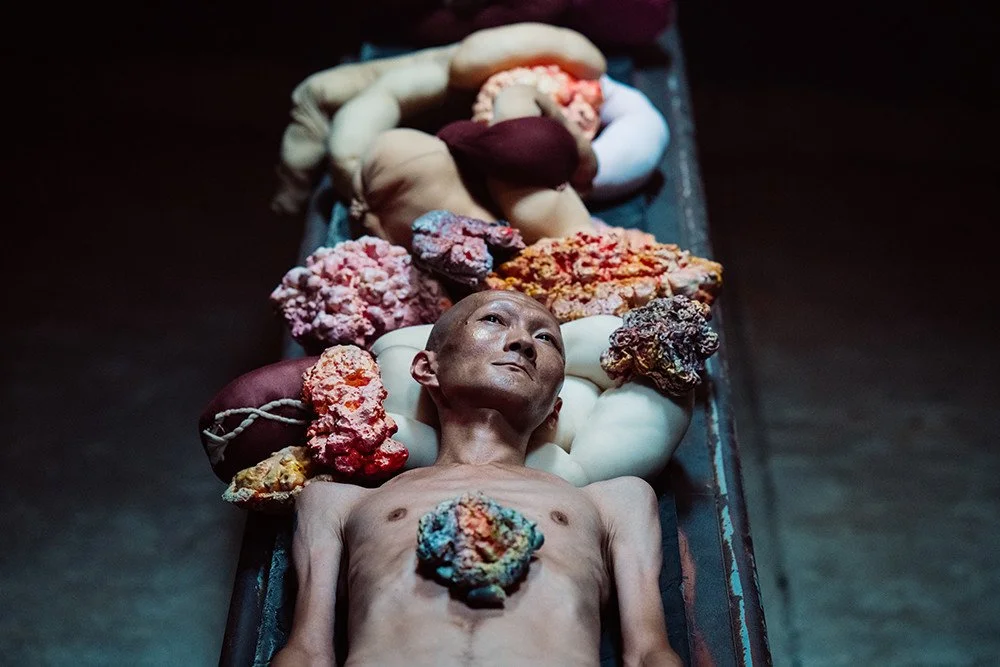SATURDAY, SEPT 10, from 20:30
AT CINÉMA Elvire Popesco
The last screening of short films invites audiences into a sensory universe that melts bodily boundaries. Hip Zones intertwines reality with fiction and dissolves the body in the lava of its fears, desires, and thoughts. The five short films presented at Cinema Elvire Popesco explore the body's memory by reimagining new forms of movement, synesthetic experiences, and necessary recontextualizations. Together they form a sponge-body, an organism powerfully touched by time, where the past experiments become the hip zones of today.
SHELLS
8:49, 2022, CZ
D: Marie Magdalena Kochová
C: Jarek Lambor
The elevator of the nursing home turns into a stage as the old dancer explores the limits of his body, memory and the passage of time. Trapped between four walls, he must face the helplessness of his own languishing shell. Starring Jan Minařík, soloist of the Pina Bausch Theatre and the greatest Czech dancer of the 20th century.
NEON PHANTOM
19:59, 2021, BR
D: Leonardo Martinelli
C: Soraya Bastos
João is a delivery man who dreams of having a motorcycle. He was told that everything would be like a musical film.
SAUNA
4:19, 2021, CH
D: Anna Lena Spring, Lara Perren
Ava enters the Sauna for the first time. She is overwhelmed by the nudity, her thoughts, and the physical sensations. The other guests go about their routines. With the rising heat Ava starts to relax. Finally, she melts away and dissolves into complete ecstasy.
NICHOLAS BROTHERS: STORMY WEATHER
20:13, 2022, US
D: Michael Shevloff, Paul Crowder
In the 1940s, virtuoso tap dancing duo the Nicholas Brothers performed a dance routine so beautiful, so athletic, so seminal, it prefigured hip hop dance by three decades. Contemporary dancers Les Twins, inspired by their story, bring this iconic routine out of the shadows, creating a modern incarnation of the groundbreaking original.
SOAP
17:26, 2021, TW
D: Ting-tong Chang, Hsuan-kang Tsai
In this project, Ting-tong Chang utilises an instance of fake news that circulated during World War I, “Kadaververwertungsanstalt” (literally, Carcass-Utilisation Factory). This was a rumour deliberately spread by the British Intelligence agencies. By way of mass media, they fabricated and circulated a story about the Germans having built a secret factory in the heart of a German forest where they dissolved corpses into soap for army use when resources were scarce. Along with illustrations, fabricated reports combined conspiracy theory and already existent prejudice towards Germany in order to facilitate a shift in British public opinion in support for the war.
Using this story as his base, Chang constructed his own fictional soap-making factory, which also serves as a centre of information production, turning soap into a tangible metaphor for information.

